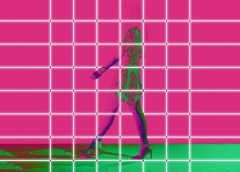
What is Web 3 Fashion?
[ad_1]
If Web1 was about “read” and Web2 was about “read and write,” then Web3 is about “read, write, and own,” says Farfetch Founder and CEO José Neves.
On this week’s Most Innovative Companies podcast, Neves explains what Web3 is and what it’s capable of through the lens of fashion and culture, drawing from his experience founding and growing Farfetch, the online luxury fashion retail platform.
Fashion, Neves says, is a deeply human endeavor and a core part of who we are as individuals. Fashion allows us to apply different “masks” based on how we feel, who we want to be, or what we want to portray on any given day. “It’s your second persona that is with you every single day and therefore technology should be at the service of that, not replacing that,” he says. “[At Farfetch] we always think of technology as enhancing the human interaction between curators, creators, and levels of fashion, as opposed to replacing that human connection.”
Farfetch has consistently shifted and innovated to bring customers and retailers together, emphasizing community, user control, and responsibility. Pairing those who need or want with those who have. Web3 is just an extension of this phenomenon, Neves says, which is why it makes so much sense for Farfetch to actively enter the space with a Web3 iteration of their long-standing Dream Assembly accelerator, Dream Assembly Base Camp.
“When you take [Web3] to fashion, the use cases are endless,” he says. “The issue is that when people think of Web3 Fashion, they think of digital clothes on avatars–sometimes they look horrendous, sometimes quite futuristic, but not that exciting. They ask themselves, is it a game? Or is it something serious like a second life kind of thing? The answer is: It can be all these things. It doesn’t matter. For me, the definition of Web3’s application to Fashion is the application of these principles of user control and user ownership and decentralized architecture to the fashion use cases.”
Neves is a natural techy who one day found a love for fashion and, on the lookout for a way to fuse his two passions, founded his own shoe brand in London in the late 1990s. Shortly after, he recognized that, while people were flocking to the web for its eCommerce opportunities, boutiques and independent retailers were left “holding the bag” and in need of a way to compete. The world was in need of connection.
Able to speak both languages–the language of tech and the language of fashion–he gave them the answer, in the form of a revolutionary business model which would blend the physical with the digital.
That was 2007, and hindsight has shown that Neves had the forethought to grasp that our ways of living and doing business would increasingly involve both the real word and the virtual one.
He compares what Farfetch has long done with what Airbnb and Uber do–though Farfetch preceded them both–in terms of matching existing assets with people who need those assets. “They’re not creating anything new; actually they’re utilizing and making more efficient something that already exists out there in the world,” Neves says. “Farfetch was doing exactly that, taking the inventory that was already in boutiques without having the need to produce anything more and just connecting it 24/7.”
The idea was simple but the impact was radical: decentralizing a system long before people were talking about decentralization.
Listen to the episode for the full interview.
You can listen and subscribe to Most Innovative Companies on Apple Podcasts, Stitcher, Spotifyor wherever you get your podcasts.
[ad_2]
Source link


